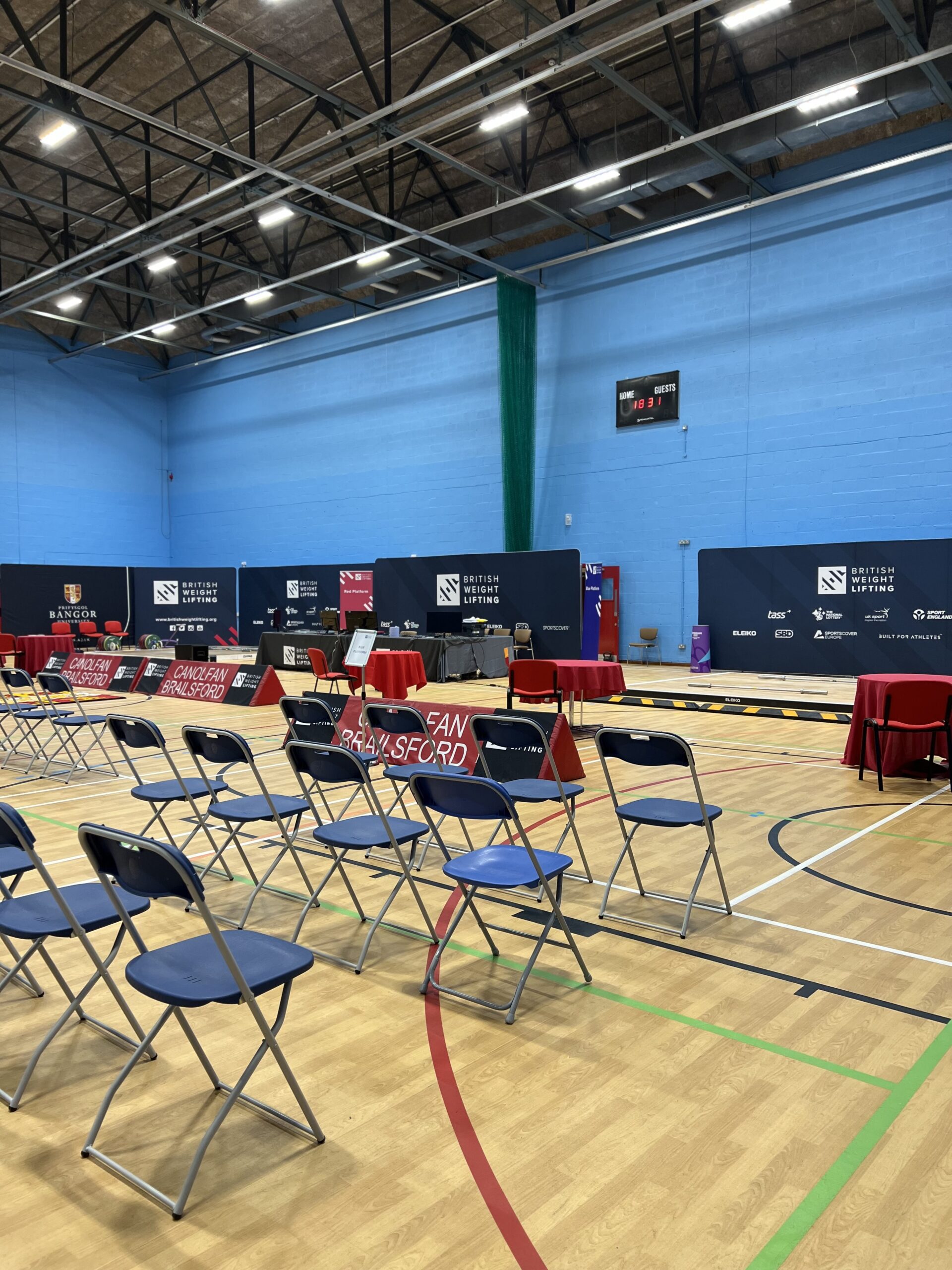Lifters Attire
While this page is aimed at Technical Officials and in particular Technical Controllers, it’s also a great resource for athletes who want to understand what they need to do to comply with the rules. Why is the attire important? And why are there length limits on items? Obviously, safety has a strong part to play but also because we need to standardise what lifters wear to make all lifters’ attire as equal as possible. Rather than list exactly what is and isn’t allowed (there’s a handy rule book for that one), we’ll list some items (with a bit of an explanation) as to what we pay close attention for.
Basics:
- The singlet may be of any colour and may be patterned, t-shirts and long sleeve tops must be one colour, tight fitting and without a collar, the shorts or leggings must one colour and tight fitting.
- There is no rule for hats, caps, or helmets on the head when the lifter is on the platform. Sensible one when you think of head coverings for religious beliefs, but this also means that you can wear a baseball cap as well. Why you would want to is another question altogether.
- Tape, Bandages, and gloves:
- The fingertip must be visible when using tape on the digits. There have been incidents where lifters have packed out the tape to elongate their fingers to help with hook grip. Obviously, an unfair advantage, hence this rule.
- No bandages on the elbows (up to 5 cm from the elbow when arm straight). This helps us spot the lock out issues with the elbows. However, this rule also is slightly conflicted by the rule that says lifters can wear tight fitting long sleeved t-shirts that completely cover the elbow. Discussed below.
- Bandages are allowed on the hands and palms.
- No bandages or plasters on the barbell. Seems odd to have to state that one but it does happen.
- Gloves and palm guards are allowed. You don’t see it often, but some lifters do wear them.
- A belt may be used, outside of singlet with a maximum width of 12cm (always have a small tape measure to hand as a TC).
During the lift:
- A lifter may wear any jewellery when on the platform, including a watch (remember they can wear jewellery at weigh in but not a watch though..).
- Bandages / Knee Wraps / Knee Sleeves can be any length but cannot be reinforced with wire or bone or plastic buckles etc.
- Wrist wraps are also permitted. Some wrist wraps have thumb loops. These are not allowed and therefore need to be either loose or tucked in under the wraps.
- No headphones or earbuds unless strictly allowed by the competition organisers. Prior to any comp and the start of any session, lifters with hearing aids are required to notify the organisers accompanied with a doctors note. At a recent competition, we had an interesting incident where a lifter came on with what was quite clearly an earbud for music, rather than a hearing aid. Both of us were the side refs and raised this with the centre ref who then raised this with the lifter (he didn’t have a coach so spoke directly to him). He explained that this was a for a medical condition but wasn’t aware he was supposed to have raised this. The lifter was told for the next competition that this was a requirement and allowed to continue after confirmation with the competition organiser.
- Depending on the Tier, if the lifter is permitted to wear shorts and T-Shirt, this must be tucked in.
- As a side referee, if you spot an issue with the lifters attire, raise your hand so the centre ref notices. The centre referee will then call a halt to the proceedings and address the issue. For example, if a lifter comes out wearing a T-Shirt instead of a singlet at a Tier 1 event, they are not permitted to lift until the remedy the situation. The clock continues and if the time expires, they lose their lift.
Summary:
Since the introduction of the long sleeves and full-length leggings, there’s a lot of contradictory information. For example, an athlete is not allowed to tape the elbows, but if the athlete is wearing a long-sleeved top, how would you know? Also, while leggings must be full-length, what’s to say an athlete isn’t wearing 3/4 length but with socks pulled up high over them… and is this therefore ok? So, on this basis, we feel there’s still room to improve on clarifying these rules. But in general, we work on the basis that if the overall look ticks the boxes, then it’s ok. Here’s a few final reminders:
- As soon as the athletes start to warm up, pay attention to what they’re wearing and size of belt/tape etc. The earlier you catch it, the better for the lifter. The last thing an athlete needs is to be told to fix something just as they are about to go on to the platform.
- Keep an eye out for the belt size and remember that even a metal clasp/locking system is allowed.
- Finally, remember that we are all here for the benefit of the athlete. Be courteous when speaking to the coaches about the athletes’ attire and catch any issues early on so they don’t end up panicking with 30 seconds left on the clock.


